20+ SAMPLE Basic Proposal
-
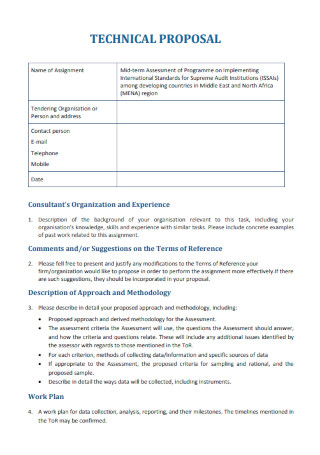
Technical Proposal
download now -
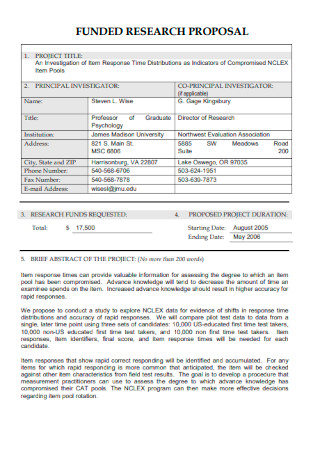
Funded Research Proposal
download now -
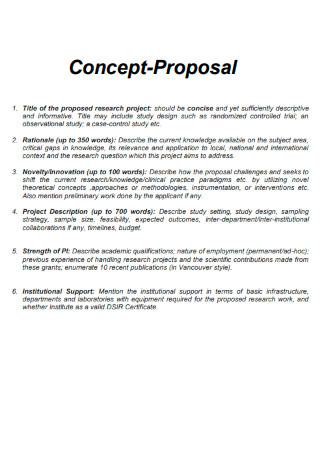
Concept Proposal
download now -
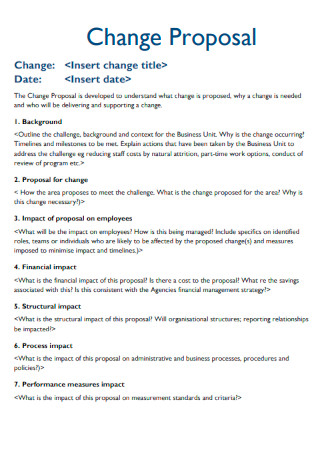
Change Proposal
download now -
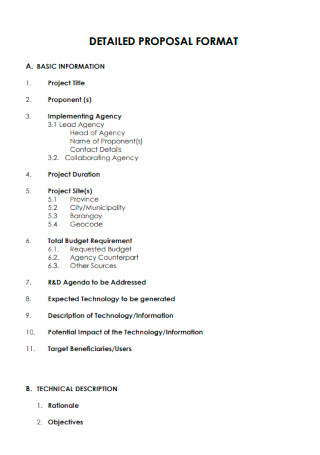
Detailed Proposal Format
download now -
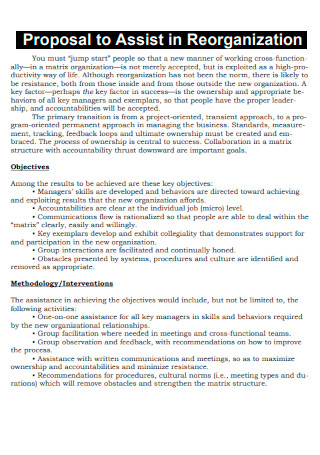
Proposal to Assist in Reorganization
download now -

Technical and Financial Project Proposal
download now -

Case Study Proposal
download now -
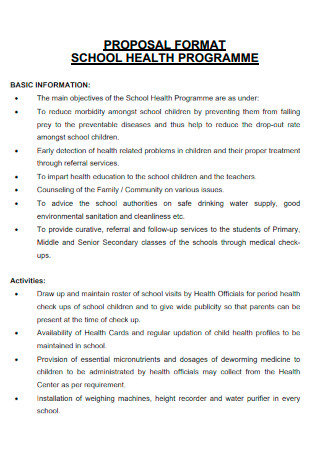
Proposal Format for School Health Programme
download now -
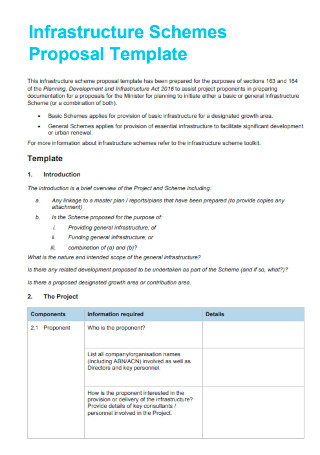
Infrastructure Schemes Proposal
download now -
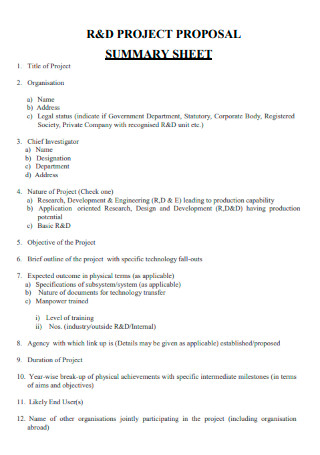
R&D Project Proposal Summary Sheet
download now -
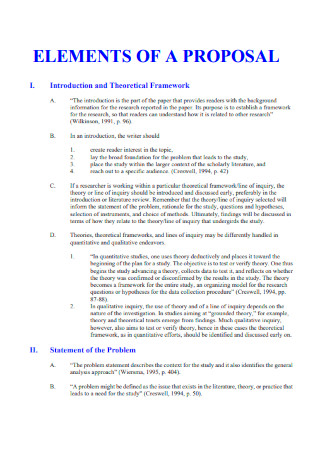
Elements of a Proposal
download now -
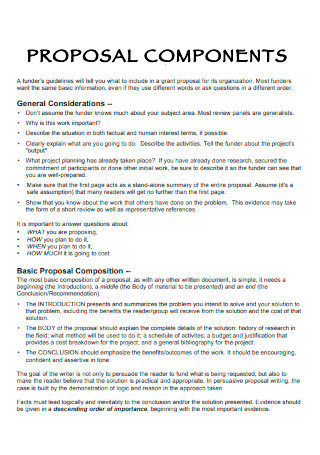
Proposal Components
download now -

Core Proposal
download now -
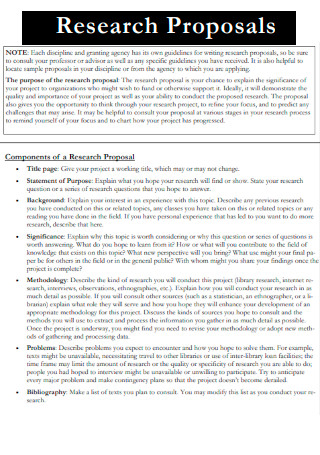
Research Proposals
download now -
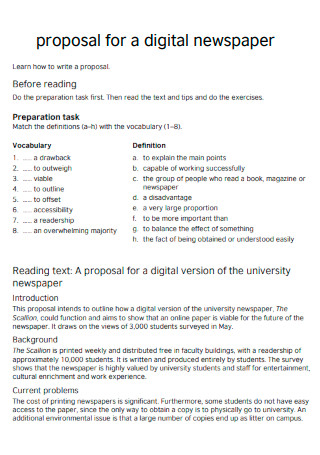
Proposal for a Digital Newspaper
download now -
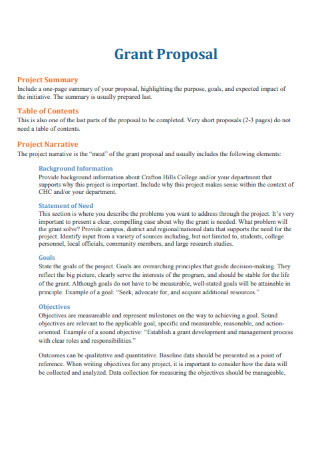
Grant Proposal
download now -
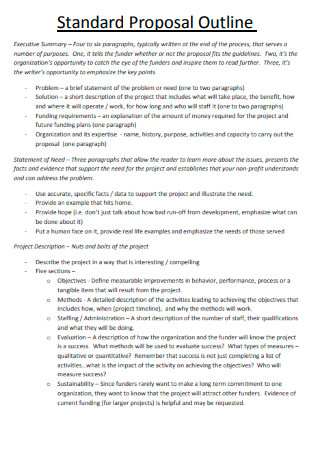
Standard Proposal Outline
download now -

Project Proposal on Child-Friendly Education
download now -
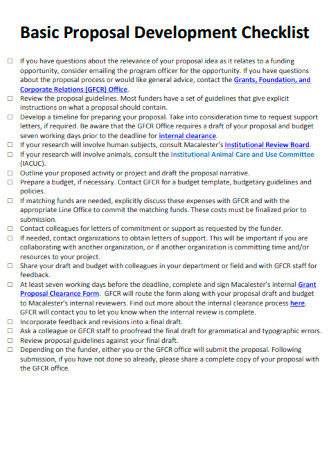
Basic Proposal Development Checklist
download now -
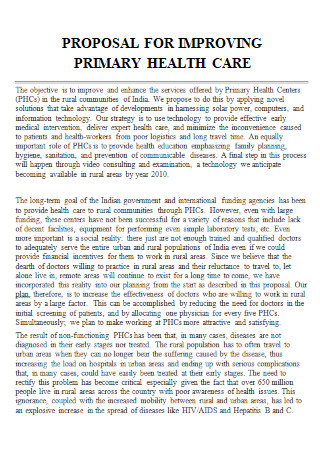
Proposal for Improving Primary Healthcare
download now
FREE Basic Proposal s to Download
20+ SAMPLE Basic Proposal
a Basic Proposal?
Benefits of Proposal Templates
Tips In Creating a Proposal
How To Write a Proposal Letter
FAQs
How should a proposal be formatted?
What is the definition of an excellent proposal?
What factors contribute to the success of a proposal?
What Is a Basic Proposal?
A basic proposal is a formal document created for potential bidders or customers as a solution to a problem they are currently experiencing. If the proposal is approved, the person who prepared it can arrange for the construction of a legally binding contract. Proposals are significant because they describe how a proposed business or venture can be established from the ground up. A simple consulting proposal, a basic budget proposal, a simple project proposal, and other simple ideas are shared. You can use the templates provided above as an alternative proposal example. According to statistics, corporate foundations receive more proposals than independent and community organizations. 6% each got over 1,000 requests, with 11% funding at least half of them.
Benefits of Proposal Templates
Have you ever been in a situation as a salesperson where you’re just sitting in your chair, staring at the ceiling, and sweating out over having to go through the process of writing a sales proposal? We all know that creating sales proposals is a never-ending process in the marketing profession. Although it is not the most thrilling aspect of the marketing industry, drafting and submitting a sales proposal is. But, believe it or not, any successful transaction necessitates a strong sales presentation. Writing a sales proposal is similar to completing a high school project; you don’t want to do it, but you have to. Even while writing business proposals is an unavoidable aspect of any marketer’s job, it shouldn’t be as onerous as it is. You can make that procedure a lot easier if you look for it. This post will look at the benefits of proposal templates for the proposal creation process.
Tips In Creating a Proposal
You may find that you need to write a proposal to secure funding. Perhaps you’re a businessman or lady seeking to resolve an issue at work or a vendor seeking new business. Whatever the matter may be, understanding how to write a proposal will assist you in writing more engaging copy and achieving the desired results. The following recommendations should be followed to accomplish this.
1. Organize a Brainstorming Session
Make sure that you talk to the right people to get the help and results you want. So, think about who should get your proposal first. If your proposal is for a specific reason, it may be easy to determine who your audience is. Is it? If so, you’re ready to start looking at your audience. If you’re giving it to a group, think about how well they already know the subject. You might need to provide more background information or details based on this answer. It’s also possible that you might be able to skip this part and instead focus on coming up with a solution to the problem.
2. Research
Before you start composing your proposal, you need to research what you want to write about. There are many ways to create your credibility on a subject, but research is one of the best ways. It also helps you show that there is a problem and that you are the best person to solve it. It’s easy to find examples of things you can include. You can also look for facts, figures, charts, graphs, and other types of data you can use. As a rule, you don’t want to use only your own opinion to back up your proposal. You need the best evidence to back up your points and get the support of your target audience. When you can’t get the information from someone else, you may have to get it yourself. Your surveys may be the only way for you to back up your claims.
3. Attract the Reader
As previously stated, it is critical to grab the reader’s interest. Your introduction should accomplish two goals: engaging the reader and establishing you as a reliable source. Along with entertaining the reader, you must provide context for the subject. Bear in mind your audience while determining the amount of background material required. You don’t want to ramble on and on while doing this. Rather than that, consider exciting information that might pique your audience’s interest in the subject. If you’re presenting your firm to a new audience, this is an excellent opportunity to share your company’s goal statement. Include a short history of your company and your professional background.
4. Present the Issue
The following section requires you to define the issue. What issue are you hoping to resolve? Address the cause of the problem as well as the associated consequences. Most essential, don’t forget to describe why this is an issue worth addressing in the first place. This is your chance to reveal your expertise. Discuss the issue through the lens of your personal experience; nevertheless, don’t forget to incorporate the facts and data gleaned from your research. Additionally, as indicated previously, consider your audience while determining how in-depth you should go with the subject.
5. State Your Proposal
Now that your audience is aware of the issue, it’s time to provide a solution. How will you solve it? Why should they choose this solution? Discuss other possible alternatives and why they aren’t feasible options. If they’re viable, explain why yours is better. Will it be cheaper or more effective? Because you’re writing this proposal to get support, it should be persuasive. Keep this in mind as you brainstorm. You must persuade your audience that this is the best answer, but you must also get their support. Consider what you may provide to support your opinions and persuade others to accept them. Include case studies, examples of similar approaches, data, and statistics to support your strategy. You could even test the solution on a smaller scale.
6. Outline the Initiative
While stating the solution, discuss the project’s practicality. Discuss the plan as though it has been approved. Prepare a timetable with start and end dates. Inform them of the steps to be taken and whether or not they can occur concurrently. It’s also vital to discuss finances. What will the implementation cost be? Make sure you have a realistic budget that shows your audience how much it will cost to make it happen.
7. Bring Everything Together
Your proposal ends with a conclusion. How will you tie it all together? What do you want them to remember? In conclusion, highlight key points. You should restate the issue and the solution. Consider including intriguing facts that can help your proposal stand out. Tell your audience what to do if they decide to support you.
How To Write a Proposal Letter
A proposal letter is a formal record that presents your business ideas to a critical recipient who has the authority to make decisions. A proposal letter may present an argument to persuade the reader to read the entire document with supporting facts, or it may serve as the proposal itself. Proposal letters can be used for various purposes, including small company activities such as obtaining a loan or presenting your manager with a new marketing strategy. Additionally, proposal letters can be a quick precursor to a more comprehensive, more complete business proposal, such as one for a government grant for a research project. The contents of your proposal letter will vary according to the nature of the project. The following are some standard details to include when writing a proposal letter:
1. Introduce yourself and offer information about your background.
The beginning of your proposal’s purpose is to pique the reader’s curiosity. This paragraph should offer basic information about your business and an outline of the subject to ensure that the recipient understands what they are about to read. If you follow up on a meeting, include a quick reference to the discussion in the opening statements. Mention this if your business already has a relationship with the receiver of your letter.
2. Indicate the purpose of your proposal.
Your proposal aims to communicate what you propose to accomplish or what problem you intend to resolve. A proposal for a business arrangement would include specific specifics and fundamental terms, whereas a proposal to redesign a firm website would include your understanding of their current website concerns.
3. Define your aims and emphasize your uniqueness.
Describe the long-term goals you want to accomplish and the objectives you’ll use to get there. Be succinct and, if possible, offer precise figures. Additionally, highlighting your valued assets can help you stand out if your proposal solves a business’s problem. Indicate some of your unique abilities relevant to the project and why you are the ideal candidate for the job. This could include prior experience with a similar issue or a description of a unique procedure that produces excellent outcomes. If your proposal is for a company venture, emphasize a few points that set your ideas apart from the competition. You might utilize bullet points to organize your features when highlighting your essential differentiators.
4. Briefly outline the budget and the intended usage of funds.
Cost is a significant consideration for decision-makers. Depending on why you’re composing a proposal letter, you may need to know how you intend to use a loan or the estimated cost of your project to investors. While you are unlikely to need to have an exhaustive list of expenditures, offering a basic notion of the budget will help investors better understand the project.
5. Conclude with a call to action and a follow-up request.
A call to action prompts your receiver to take more effort and generates a sense of urgency for them to do so. This can improve the likelihood of responding. This step could be as simple as responding to your proposal and inquiring whether they wish to chat further. Additionally, expressing your intentions to follow up with them demonstrates your commitment to your proposition. Indicate the day on which you will contact them again so they can anticipate your call or email.
6. Conclude the letter by including your contact information.
Thank the recipient for giving time to evaluate your idea and invite them to contact you with any questions. Put a professional closure on the letter, such as “Sincerely” or “Regards,” followed by a comma. Include your name a few lines down, and sign your name directly above it.
FAQs
How should a proposal be formatted?
As you can see, a proposal usually has three parts: Here are some things to know about the introduction: In this example, “issue” refers to everything you need to know about the topic. This includes the subject, the main argument, the background information, and the issue’s importance.
What is the definition of an excellent proposal?
A well-crafted grant proposal has been meticulously prepared, planned, and succinctly conveyed. Generally, a potential applicant wants to learn about all of the funding institution’s relevant program criteria.
What factors contribute to the success of a proposal?
A well-written proposal sums up each step of the sales process and briefly explains how a specific product or service will meet a need that has been identified. To make a good sales pitch, you should remind potential customers about their pains and why they were looking for a solution in the first place.
If you have any unfinished tasks, it would be a shame to abandon them. If you develop a complete short proposal around it, you’ll often find success. By the time we conclude this essay, you will have better understood these business contracts and the ability to form one on your own. Take everything you’ve learned here and apply it when the moment is appropriate for you!
